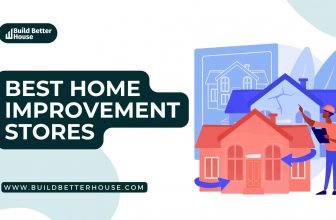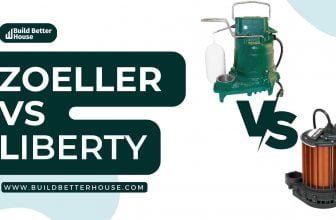RadonAway Rp140 vs. Rp145: Which One Is Right For You?

Wondering which one to choose among RadonAway Rp140 vs. Rp145?
If you’re looking to improve the air quality in your home, investing in a quality radon mitigation system is a must. And when it comes to choosing one, the RadonAway RP140 and RP145 are two popular options on the market. But with many factors to consider, it can take time to decide.
So read on to find out which RadonAway system is right for your needs.
FAQs
1. Can I install a radon mitigation system without professional support?
Homeowners with DIY experience can easily install the radon mitigation systems; however, hiring a professional is always best.
2. What is the difference between RP140 and RP145?
The RP145 is more powerful than the RP140 and is for larger homes or homes with multiple levels. The RP140 is ideal for homes with crawl spaces or basements.
3. Do I need a radon mitigation system if I don’t have high radon levels?
It’s always a brilliant idea to have a radon mitigation system, even if your levels are low. Radon levels can change over time, and a mitigation system can help ensure you and your family remain safe.
4. How often should I conduct a radon test?
The EPA recommends conducting a radon test every two years or whenever you renovate or make structural changes to your home.
RadonAway Rp140 vs. Rp145
| Product | Features | Rating | ||
RadonAway Rp140 | Weighs 6 lbs14-19 WattsPolycarbonate plastic housingFive-year limited warranty | ⭐⭐⭐⭐⭐ | Check Price | |
RadonAway Rp145 | 4″ diameterThermally protected motorPolycarbonate plastic housingFive-year limited warranty | ⭐⭐⭐⭐⭐ | Check Price |
Understanding Radon and the Importance of Radon Mitigation Systems
Radon is an invisible and odorless gas that can cause severe health issues if left unchecked. Breathing in radon can damage the cells that line your lungs and increase your risk of developing lung cancer.
According to the EPA (Environmental Protection Agency ), radon is the cause of approximately 21,000 lung cancer deaths in the United States every year. That’s why having a radon mitigation system in your home is essential.
A radon mitigation system reduces radon levels in your home. These systems work by either preventing radon from entering your home or removing radon that has already entered.
Several types of radon mitigation systems are available, including active soil depressurization, passive radon mitigation, and sub-slab depressurization. The type of system you choose will depend on the specific needs of your home.
Rp140 vs. Rp145: Overview
RadonAway offers two models of radon mitigation systems: the Rp140 and Rp145.
RadonAway Rp140 and Rp145 are state-of-the-art radon mitigation systems designed to monitor and remove radon from the air continuously. The systems consist of a fan, piping, and a vent installed in your home’s basement or crawl space.
The Rp140 is a single-fan system designed for use in homes with radon levels of up to 4.0 pCi/L. It is a reliable and cost-effective solution that can install in various settings, including basements, crawl spaces, and slab-on-grade foundations. The Rp140 is also easy to install, operate, and maintain.
On the other hand, the Rp145 is a dual-fan system designed for use in homes with higher radon levels or larger footprints. It is a more robust and advanced solution that can handle radon levels of up to 7.0 pCi/L. The Rp145 is also more expensive than the Rp140 and requires more space to install.
RadonAway RP140 vs. RP145: How Do They Work?
RadonAway RP140 and RP145 work by drawing radon gas from the soil and venting it outside. The systems use a fan to create negative pressure in the soil under the foundation, which pulls the radon gas through a pipe system and out of the building.
The RP140 and RP145 models are designed to install in different locations, depending on the specific needs of the building.
The RP140 model intends to install in a building’s crawl space or upper level. It is ideal for buildings with a crawlspace or basement, as it draws the radon gas from the soil and vents it through the roof.
The RP145 model, on the other hand, is designed for installation in the basement or lower level of a building. It is ideal for buildings with a slab foundation, as it draws the radon gas from the soil and vents it through the side of the building.
Both models use high-quality, low-energy fans designed to operate quietly and efficiently.
RadonAway RP140 vs. RP145: Performance
RadonAway RP140 and RP145 are high-performance radon mitigation fans designed to effectively reduce the levels of radon gas in a home or building. These fans intend to provide superior airflow and pressure capabilities, making them ideal for use in both residential and commercial settings.
The RP140 and RP145 can produce a maximum airflow rate of 270 CFM (cubic feet per minute) and a maximum pressure of 4.2 inches of the water column. These capabilities are essential for effectively moving air through the radon mitigation system, which is necessary to reduce radon levels to safe levels.
The RP140 is a lower power consumption device, rated at 70 watts, while the RP145 has a slightly higher power consumption rating of 82 watts. However, both models operate efficiently, reducing energy costs and minimizing environmental impact.
Overall, the RP140 and RP145 are high-performance radon mitigation fans with superior airflow and pressure capabilities, efficient and quiet operation, and are built to last. These fans are essential components of any effective radon mitigation system, enabling homeowners and building owners to protect their health and safety by reducing the levels of radon gas in their homes and buildings.
RadonAway RP140 vs. RP145: Features and Benefits
Both the RadonAway RP140 and RP145 are popular among homeowners seeking an effective and affordable radon mitigation system. Here are the features and benefits of the RP140 and RP145.
- Easy Installation: The RP140 and RP145 are easy to install by a professional or a homeowner with DIY experience.
- Energy Efficient:. The RP145 and RP145 are designed to be energy-efficient so that it won’t add much to your monthly utility bills.
- Quiet Operation: The product features a quiet fan that won’t disrupt your daily activities.
- Effective Radon Reduction: These products have outstanding radon mitigation capabilities and can lower radon levels below the EPA’s 4.0 pCi/L recommended action level.
- Powerful Fan: The RP145 features a powerful fan capable of moving up to 300 cubic feet of air per minute, making it ideal for larger homes.
- Affordable: The RP140 is one of the most affordable radon mitigation systems on the market, making it an excellent choice for budget-conscious homeowners.
RadonAway RP140 vs. RP145: Drawbacks
While the RadonAway RP140 and RP145 systems effectively reduce radon levels in homes and buildings, it is necessary to consider potential drawbacks. Here are some of the disadvantages of RadonAway RP140 and RP145.
Noise
One of the most significant drawbacks of the RadonAway RP140 and RP145 systems is noise. As these systems use a fan to create suction and vent the radon gas outside, they can be noisy.
The noise can be especially noticeable if the system is in an attic or crawl space near a bedroom or living area.
Aesthetics
Another potential drawback of the RadonAway RP140 and RP145 systems is aesthetics. The systems require a fan to install on the exterior of the home or building, which can be unsightly. The white or black plastic fan covers may not match the house’s exterior, which can concern some homeowners.
Maintenance
The RadonAway RP140 and RP145 systems require regular maintenance to ensure they work correctly.
The fan should be checked periodically to ensure it is functioning correctly and not making excessive noise. The system should also monitor to ensure it effectively reduces radon levels.
Energy Consumption
RadonAway RP140 and RP145 systems are energy consumption. These systems require electricity to operate, which can increase energy costs. The amount of energy consumed can vary depending on the size of the fan and how often it is running.
RadonAway Rp140 vs. Rp145: Differences
In this section, we’ll look closer at the differences between the RadonAway Rp140 and Rp145, so you can decide which system suits your home.
Design
One of the main differences between the RadonAway Rp140 and Rp145 is their design. The Rp140 is a compact and lightweight system designed to be mounted vertically.
It features a 4-inch inlet and outlet, making it ideal for homes with limited space. On the other hand, the Rp145 is a more extensive system to be mounted horizontally. It features a 6-inch inlet and outlet, ideal for larger homes or buildings.
Noise Level
Noise level is an important consideration when choosing a radon mitigation system. The RadonAway Rp140 is known for its quiet operation, producing only 50 decibels of noise.
On the other hand, the RadonAway Rp145 has 60 decibels of noise, which is slightly louder. The Rp140 may be a better option if the noise level concerns you.
Price
Price is always an important consideration when purchasing, and the RadonAway Rp140 and Rp145 are no exception. The Rp145 is a more robust system designed to handle higher radon levels but has a higher price tag.
The Rp140 is a more affordable option that is still effective at reducing radon levels in your home. Ultimately, the choice between the two systems will come down to your budget and the specific needs of your home.
Regarding radon mitigation systems, the RadonAway Rp140 and Rp145 are two of the most popular models on the market. While both systems effectively reduce radon levels in your home, you should also be aware of their differences.
RadonAway RP140 vs. RP145: Factors to Consider When Choosing One!
When choosing between RadonAway RP140 and RP145, there are several factors to consider. Here are a few of them:
- Radon Levels: The first factor to consider is the radon level in your home. If you have moderate to high radon levels, you will need a more powerful system like the RP140. If you have low to average radon levels, the RP145 may be sufficient.
- Home Type: The second factor to consider is the type of home you have. The RP140 is designed for homes with basements and crawl spaces, while the RP145 is for homes with crawl spaces and slab-on-grade foundations. If you have a larger home or multiple levels, the RP145 may be a better choice for you.
- Budget: The third factor to consider is your budget. The RP145 is more affordable than the RP140, making it a good choice for homeowners on a budget.
- Noise level: The fourth factor is the system’s noise level. As mentioned above, both the RP140 and RP145 operate quietly, but if noise is a concern, it is better to choose RP140.
RadonAway Rp140 vs. Rp145: Certifications
RadonAway RP140 and RP145 are two different radon fan models that reduce radon levels in residential and commercial buildings. Both of these models have been certified by various organizations to ensure their quality and performance.
The RP140 model has been certified by the Underwriters Laboratories (UL) and the Canadian Standards Association (CSA), two of North America’s most respected certification bodies.
CSA is a non-profit organization that sets standards for various products and services in Canada. In contrast, UL is a multinational, independent safety science organization that certifies and tests products for performance and safety.
The RP145 model, on the other hand, has been certified by the Performance Tested Comfort Systems (PTCS) program, a certification program for HVAC contractors in Washington. This program tests and certifies equipment and systems for energy efficiency, comfort, and safety.
The RP140 model has also been tested and approved by the National Radon Proficiency Program (NRPP) and the National Environmental Health Association (NEHA), which are two organizations that certify professionals who measure and mitigate radon levels in buildings.
Both of these models have also been tested and certified by the Radon Fan Performance Test (RFPT) program, which is a voluntary program that tests and certifies radon fans for their performance and energy efficiency.
The RFPT program is run by the Midwest Universities Radon Consortium (MURC), a group of universities in the Midwest region of the United States that work together to promote radon awareness and research.
In summary, the RadonAway RP140 and RP145 models have been certified by multiple organizations to ensure their quality and performance.
RadonAway Rp140 vs. Rp145: Warranty
When it comes to the warranty for these products, it’s important to note that RadonAway offers a limited warranty on all of their products, including the RP140 and RP145.
This warranty covers defects in materials and manufacturing for 5 years from purchase. This means that if you experience any issues with your RP140 or RP145 within 5 years of purchasing it, RadonAway will replace or repair the product for free.
It’s also worth noting that RadonAway offers an extended warranty option for their products. This extended warranty can be purchased at the time of purchase and extends the warranty period from five to ten years.
This means you’ll have even more peace of mind knowing that your radon mitigation system is safe for an extended period.
RadonAway Rp140 vs. Rp145: Cost
RadonAway is a leading manufacturer of radon mitigation systems and accessories. The RadonAway RP140 and RP145 are two popular radon fans that use in radon mitigation systems.
The cost of these fans may vary depending on several factors, such as the supplier, location, and type of installation. Typically, the RadonAway RP140 ranges from $150 to $250, while the RP145 ranges from $200 to $350.
When it comes to installation, the cost will depend on whether you are installing the fan yourself or hiring a professional. Hiring a professional will increase the overall cost, but it is worth it if you are not aware of this type of installation. Additionally, the cost of any necessary accessories or additional parts, such as couplings, elbows, or vent pipes, should be considered.
It’s important to note that while the price is an essential factor, it’s not the only one to consider when purchasing a radon fan.
The RadonAway brand is known for its reliability and durability; thus, investing in a more expensive product will save you money by reducing the need for repairs or replacements.
RadonAway Rp140 vs. Rp145: Customer Review
When it comes to customer reviews of the RadonAway RP140 and RP145, one of the most important factors is the system’s effectiveness in reducing the radon levels in the home.
Many customers report significant reductions in radon levels after installing one of these systems. For example, one customer reported that their radon levels went from over 20 pCi/L to less than 1 pCi/L after installing the RadonAway RP145.
Another important factor mentioned in customer reviews is the ease of installation. Customers appreciate that these systems are relatively easy to install, even for those without much DIY experience. One customer noted that they could install the RP140 themselves in just a few hours, while another mentioned that they could install the RP145 with the help of a friend.
In addition to effectiveness and ease of installation, customers also frequently mention the quiet operation of these systems. Many customers appreciate that these systems only make a little noise, even when operating at total capacity.
This is especially important for those with the system installed in a living space, as it can be disruptive if it’s too loud.
RadonAway Rp140 vs. Rp145: Which System is Suitable For Your Home?
The choice between the RadonAway RP140 and RP145 depends on several factors. If your home has significant levels of radon gas, you will need the more powerful RP140.
If your home has moderate levels of radon gas, the RP145 may be a good choice. You should also consider the size of your crawl space or basement and your budget.
It’s important to note that the RadonAway systems are not one-size-fits-all. Consulting with a radon mitigation professional is better if you need help determining which system suits your home. They can help you choose the best system for your specific needs.
Similar Tutorials To Check Out!
- “Radon Sump Pump: Is It Worth Your Money?”: If you have increased radon levels in your home, installing a radon fan system is an excellent approach. Continue reading this guide to know if the radon sump pump is worth your investment and how it saves you and your family.
- “9 Best Sump Pumps On The Market In 2023”: Are you looking for a reliable sump pump to protect your home from water damage? I have compiled a list of rivals to determine the best sump pump.
- “How Many Sump Pumps Do I Need To Prevent Flooding?”: If you are wondering how many sump pumps you need, there is no need to stress because you can quickly find all the information you need in this article by examining a few parameters.
- “How To Ventilate A Basement: 7 Effective Tips And Tricks”: Are you wondering how to ventilate a basement? Ventilating your basement is crucial for maintaining a safe and healthy atmosphere. This post will help you find how to ventilate a basement and some easy DIYs you can perform.
Conclusion
Radon is a serious health risk, and protecting your home and family is essential. A radon mitigation system can help reduce radon levels in your home and keep you safe. When choosing between the RadonAway RP140 and RP145, consider the size and location of your home, your budget, and each system’s warranty.
Whether you select the RP140 or RP145, you can be sure that you’re making the best investment possible for the health and security of your house.






